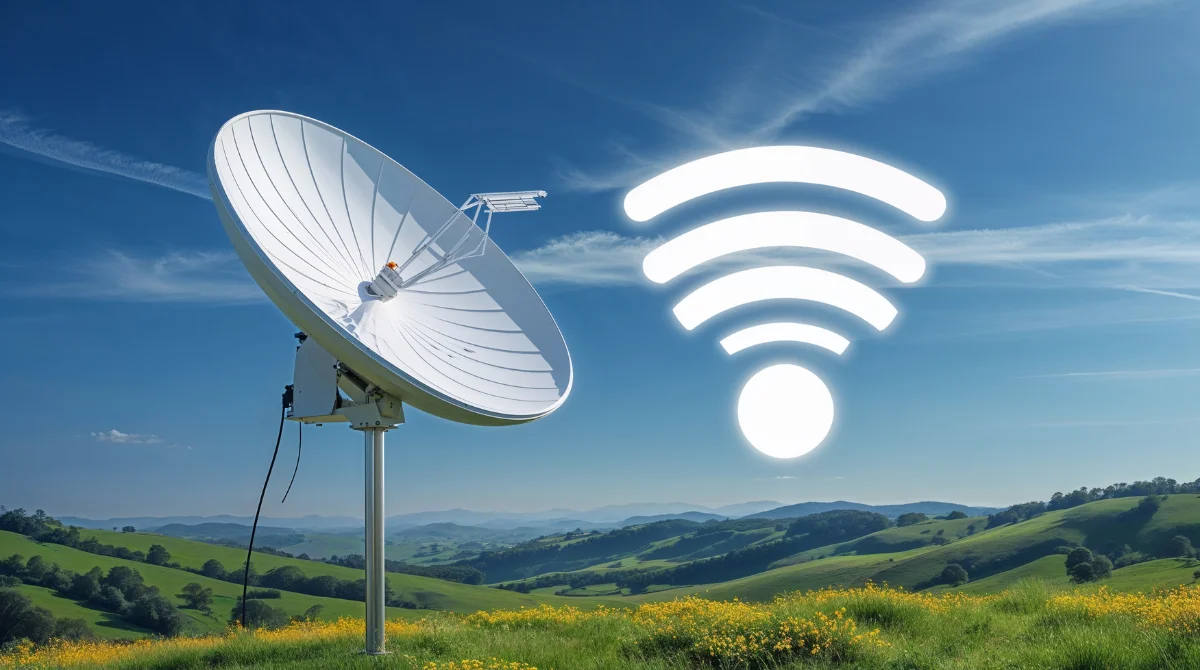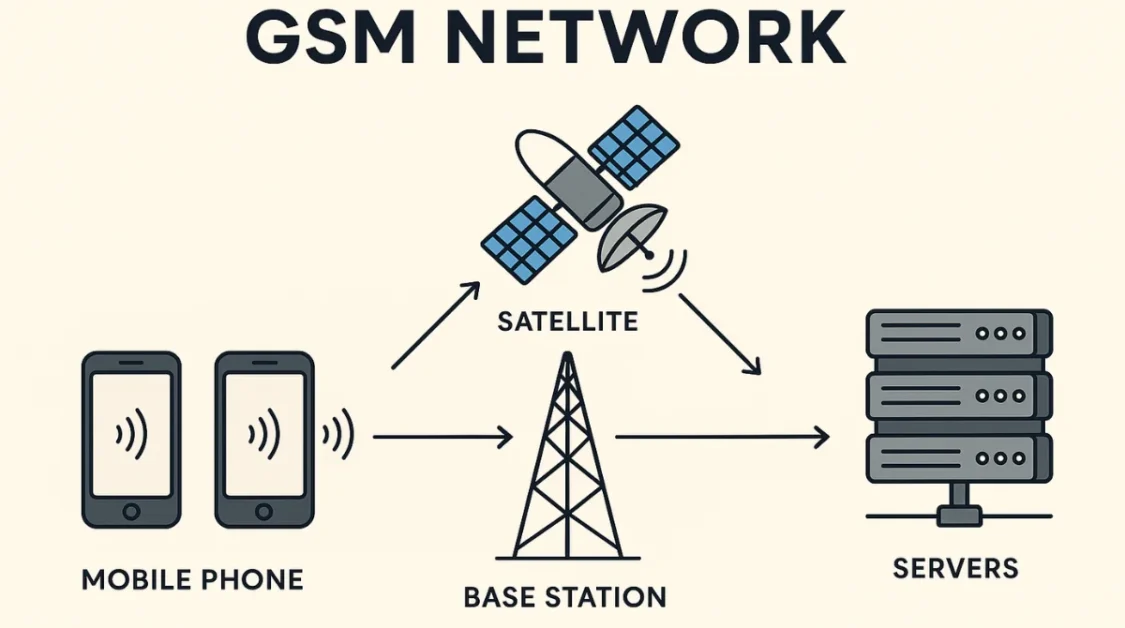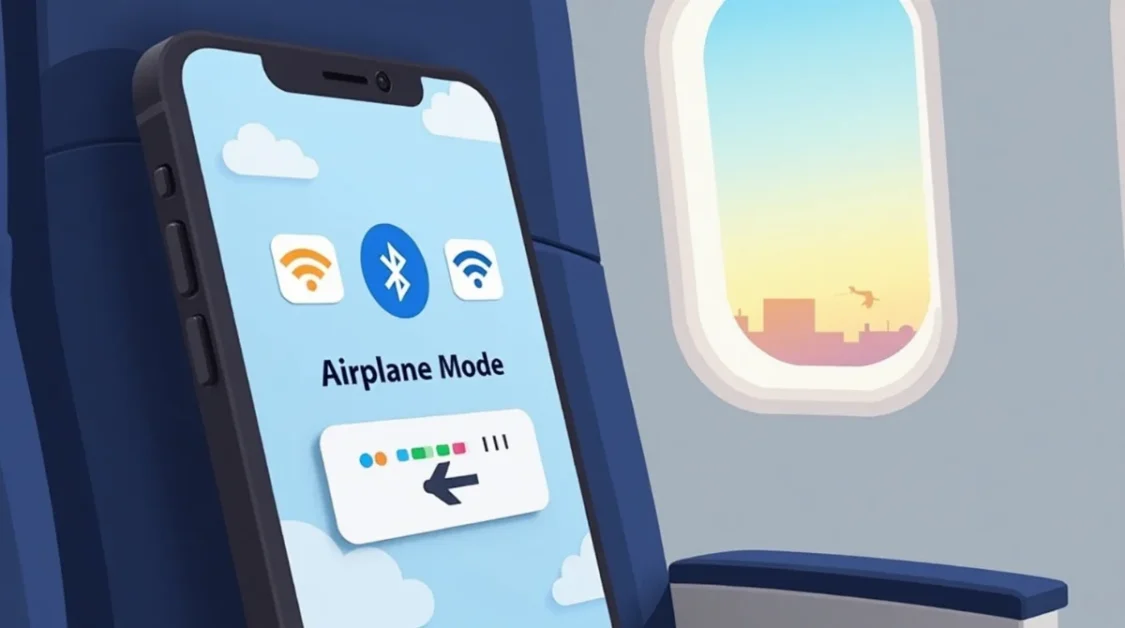Having a fast and dependable internet connection is crucial in the current digital era.For many living in remote or rural areas, traditional internet options can be limited or slow. Presenting Starlink, a satellite-based internet service created by SpaceX with the goal of offering fast internet everywhere.But how fast is Starlink internet speed in 2025? Let’s explore its performance, reliability, and what users can expect.
Understanding Starlink’s Technology
Starlink has a constellation of more than 7,000 low-Earth orbit (LEO) satellites. Unlike traditional satellites that orbit much higher, LEO satellites are closer to Earth, reducing the time it takes for data to travel. This proximity results in lower latency and faster internet speeds, making activities like video calls and online gaming more seamless.
Real-World Speed Performance
Starlink’s advertised speeds have evolved over time. As of 2025, users can expect:
- Download Speeds: Between 50 Mbps to 220 Mbps, depending on location and plan.
- Upload Speeds: Typically ranging from 5 Mbps to 20 Mbps.
- Latency: As low as 25 to 60 milliseconds, which is comparable to many cable internet services.
These speeds are sufficient for streaming high-definition videos, participating in video conferences, and online gaming. However, actual speeds can vary based on factors like network congestion and environmental conditions.
Factors Influencing Starlink Internet Speed
The following factors may affect how well Starlink’s internet service performs:
- Location: Users in rural areas closer to ground stations may experience better speeds. Conversely, densely populated urban areas might face congestion, leading to slower speeds during peak hours.
- Weather: The satellite signal may be disrupted by heavy rain, snow, or dense clouds, which could lower speeds.
- Obstructions: Physical barriers like tall buildings, trees, or mountains can block the line of sight between the satellite and the user’s dish, affecting connectivity.
- Network Congestion: As more users join the Starlink network, especially in specific regions, the shared bandwidth can lead to reduced speeds during high-usage periods.
Starlink’s Service Plans
Starlink provides a range of plans to meet the demands of different users:
- Standard Plan: Ideal for residential users, offering consistent speeds suitable for everyday internet activities.
- Priority Plan: Designed for businesses or users requiring higher speeds and more reliable connections, especially during peak times.
- Mobile Plans: Tailored for users on the move, such as RV travelers, providing flexibility and coverage in various locations.
Each plan varies in terms of speed, data priority, and pricing, allowing users to choose based on their specific requirements.
Comparing Starlink to Other Providers
When evaluating Starlink’s performance against other internet service providers:
- Traditional Satellite Providers: Companies like HughesNet and Viasat offer satellite internet but often have higher latency (up to 600 ms) and lower speeds. Starlink’s LEO satellites provide a significant improvement in both speed and latency.
- Fiber and Cable Providers: While fiber-optic internet offers faster speeds and lower latency, it’s not available in many rural areas. Starlink fills this gap by providing high-speed internet where traditional infrastructure is lacking.
- Mobile Networks: 5G and 4G networks can offer competitive speeds in urban areas, but coverage can be inconsistent in remote regions. Starlink provides a more reliable alternative in such locations.
User Experiences and Feedback
Many users have shared positive experiences with Starlink:
- “Streaming videos is smooth, and video calls are clear without interruptions.”
- “Online gaming has become possible in our rural area, thanks to the low latency.”
However, some users have noted occasional slowdowns during peak hours or adverse weather conditions. Overall, the feedback indicates that Starlink has significantly improved internet access in underserved areas.
Starlink Internet Speed for RVs, Boats, and Travelers
If you’re always on the move, you might wonder if Starlink can travel with you. The answer is yes. Starlink provides a Roam service for digital nomads, boats, and RVs.This plan allows users to take their satellite dish with them wherever they go.
The mobile Starlink dish is slightly different from the home version. It’s flat, lightweight, and built to be mounted on moving vehicles. Travelers report solid internet speeds even while camping in national parks or sailing far from shore. While speeds may vary depending on satellite coverage, it’s more than enough for email, video calls, streaming, and remote work.
How to Boost Starlink Internet Speed?
1. Choose the Best Location for Your Dish
Make sure your Starlink dish has a clear and open view of the sky. Keep it away from structures, trees, and other obstacles. Even small objects blocking the signal can reduce internet speed.
2. Mount Your Dish High
Mounting the dish on a rooftop or a tall pole can improve the line of sight to the satellites. The higher and clearer the view, the better your connection and speed will be.
3. Keep Software Updated
Regularly check for updates on your Starlink router and the Starlink app. Updates often include performance improvements and bug fixes that can help boost your internet speed.
4. Manage Network Usage
Try to avoid heavy downloads, streaming, or gaming during peak hours when many users are online. Reducing network congestion during busy times can improve your overall speed.
5. Use Wi-Fi Extenders
If your home is large, the Wi-Fi signal might weaken in some rooms. Using a Wi-Fi extender or mesh system can help maintain strong speeds throughout your house.
6. Limit Device Interference
Keep other electronic devices, like microwaves or cordless phones, away from your router. These can interfere with your Wi-Fi signal and slow down your internet.
Is Starlink Internet Speed Good?
1. Reliable Speeds for Most Users
Starlink internet speed is generally fast enough for everyday tasks like streaming videos, browsing websites, video calls, and even online gaming. Most users report download speeds between 50 Mbps and 220 Mbps, which is comparable to many home broadband services.
2. Low Latency Compared to Traditional Satellite
Because Starlink’s satellites orbit closer to Earth, latency (or delay) is much lower than traditional satellite internet. With latency around 25 to 60 milliseconds, it supports real-time activities like video conferencing and gaming better than older satellite options.
3. Performance Can Vary
The time of day, the weather, and where you reside all affect actual speeds. In rural or less crowded areas, speeds are often faster. During peak hours or bad weather, speeds might slow down a bit, but Starlink generally maintains a solid connection.
4. Great for Remote Areas
For people living in places without fiber or cable internet, Starlink offers a much better alternative. Its speed and reliability bring modern internet access to remote homes, farms, and businesses that had very limited options before.
Starlink Internet Speed Test
Importance of Speed Testing
Speed tests provide a clear measure of how fast the Starlink internet connection is performing. They reveal download speed, upload speed, and latency, giving users a good idea of their actual internet quality.
Conducting a Speed Test
Speed tests can be done easily using free websites like Speedtest.net or Fast.com. For the most accurate results, it’s best to connect directly to the Starlink Wi-Fi or use an Ethernet cable when possible.
Typical Speed Results
With Starlink, download speeds typically vary from 50 Mbps to more than 200 Mbps, contingent on network traffic and geographic area. Upload speeds are commonly between 10 Mbps and 20 Mbps. Latency generally falls between 25 and 60 milliseconds, supporting smooth video calls and online gaming.
Understanding the Results
Speeds within these ranges indicate good Starlink performance. Lower speeds may suggest the dish needs repositioning or the system requires a reboot. Testing at different times can help identify how peak usage affects connection quality.
Future Developments
SpaceX keeps improving and growing the Starlink network:
- Satellite Upgrades: The introduction of next-generation satellites aims to increase capacity and improve speeds further.
- Global Coverage: Efforts are underway to provide coverage in more countries, ensuring that even the most remote areas have access to reliable internet.
- Service Enhancements: Continuous software updates and infrastructure improvements are expected to enhance user experience and service reliability.
Conclusion
Starlink has emerged as a transformative solution for high-speed internet, especially in areas where traditional services fall short. With competitive speeds, low latency, and expanding coverage, it offers a viable alternative for many users worldwide. While there are factors that can influence performance, the overall benefits make Starlink a compelling choice for those seeking reliable internet connectivity.



